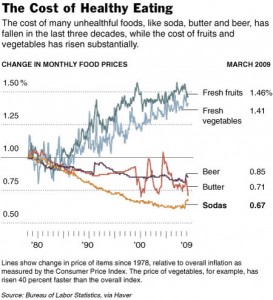The latest from Red Bull: Cocaine!
According to Time online, advertising for the sports drink Red Bull Cola made officials in Germany so suspicious that they did a little testing. Ach du himmel! Traces of cocaine. No wonder guys like it so much.
Here is the ingredient list: Water, Sugar, Carbon Dioxide, Caramel Color, Natural Flavors from Plant Extracts (Galangal, Vanilla, Mustard Seed, Lime, Kola Nut, Cacao, Licorice, Cinnamon, Lemon, Ginger, Cocoa Leaf, Orange, Corn Mint, Pine, Cardamom, Mace, Clove), Lemon Juice Concentrate, Caffeine from Coffee Beans. With these, you get 130 calories, virtually all from sugar, and some unstated amount of caffeine – along with some other no longer quite so secret ingredients, apparently.
Yum.
Update June 5: European regulatory authorities think this is a non-issue and plan no action.



